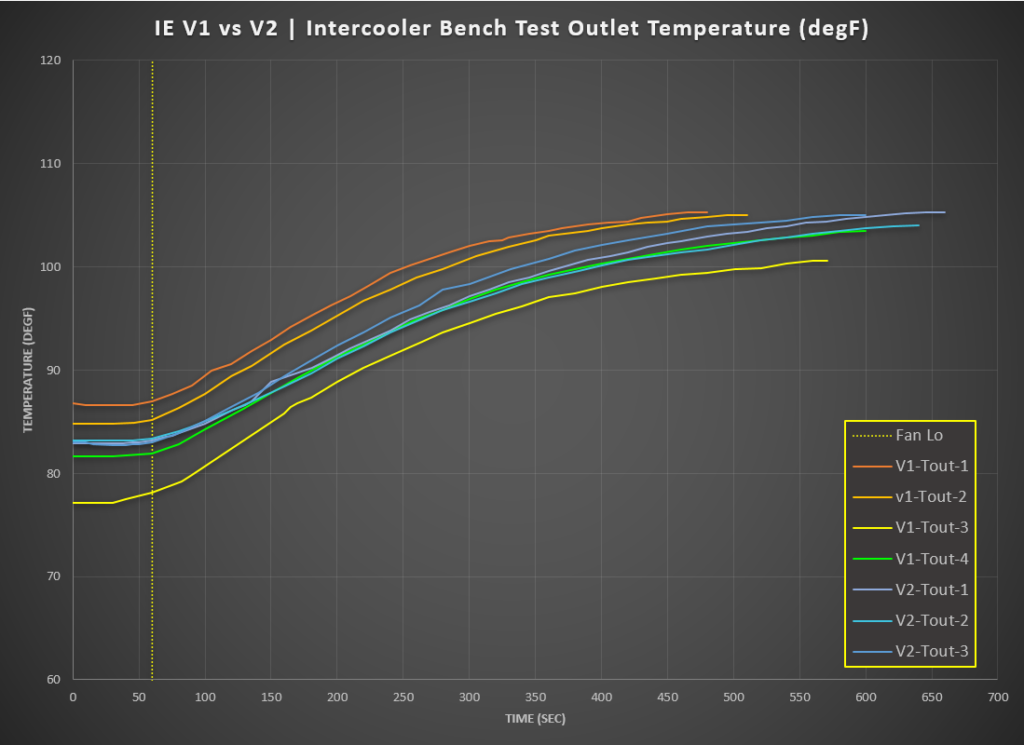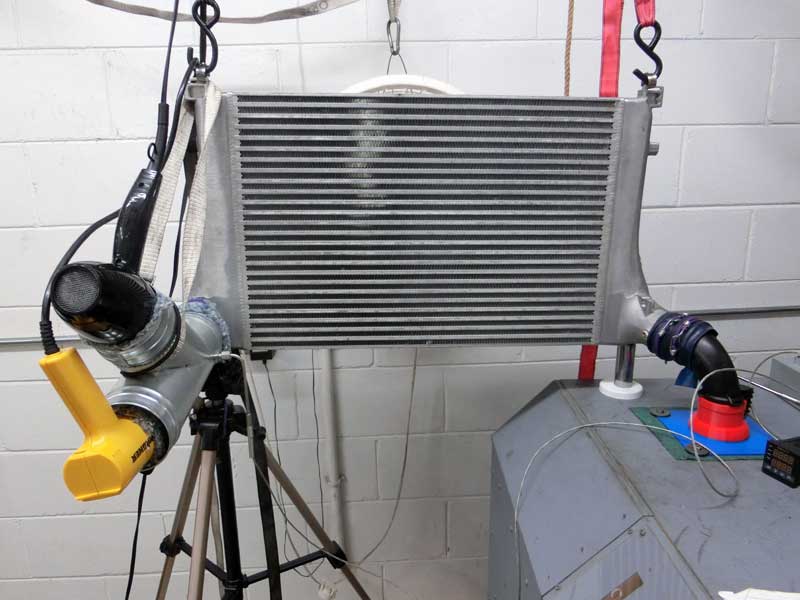Background:
Continuing a series of comparisons of the Integrated Engineering v1 and v2 intercoolers. For this post the comparison will involve measurements of bench cooling performance.
Test Procedure:
The intercoolers are attached to the flow bench with heat flowed through the interior with cooling air passing over the exterior. Details of the test method are described in the trials post.
The purpose of this bench test is to determine the outlet temperature that the intercoolers stabilize at.
Test Results:
The temperature rise rate of the IE v1 intercooler is shown on the chart:

The next chart shows the temperature rise rate for the IE v2 intercooler:
The outlet air temperature reading over time for each intercooler is shown on the next chart:

Conclusions:
The Integrated Engineering v1 and v2 intercoolers perform very similarly on the bench cooling efficiency test.
The initial rise rate of the v1 intercooler is slightly greater than the v2. After peaking the v1 intercooler rise rate drops slightly more rapidly than v2, approaching a zero rise rate more rapidly than the v2.
The steady state outlet air temperature is very similar for each intercooler, 21.1 F above ambient for v1 and 22.0 F above ambient for v2.
Overall the differences between the two intercoolers on the bench cooling test were minimal.



